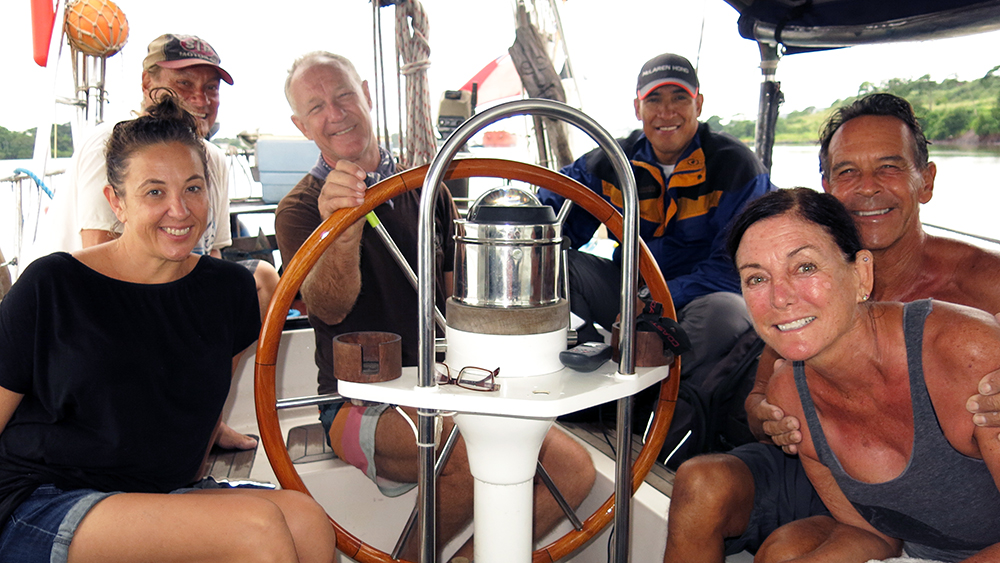
It’s been almost five years to the day since we left Jakarta to resume our cruising life on board Distant Drummer and we’ve finally made it to the Caribbean! Our passage through the Panama Canal last weekend went very smoothly. It was exciting and a little nerve-wracking to do it in our own boat, Neil skippered like a pro, we had a great crew on board to help us with our lines and our advisors were friendly and helpful. It was a great feeling when we gazed over the gates of the Gatun Locks to see the Caribbean in the distance.
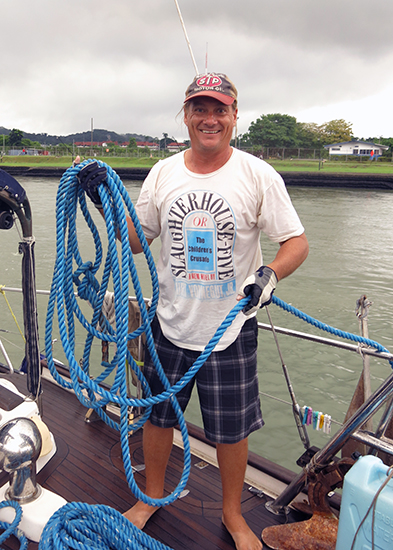
The Panama Canal Authority (ACP) require four linehandlers to be on board in addition to the skipper to hold the boat in position in the lock chambers. Big ships use locomotives to keep them in position but small vessels use hand lines. The day before we were due to leave Pati and Eric from S/V Shearwater and Stephanie and Bryan from S/V Argus joined us on board, we were all looking forward to our Canal adventure.
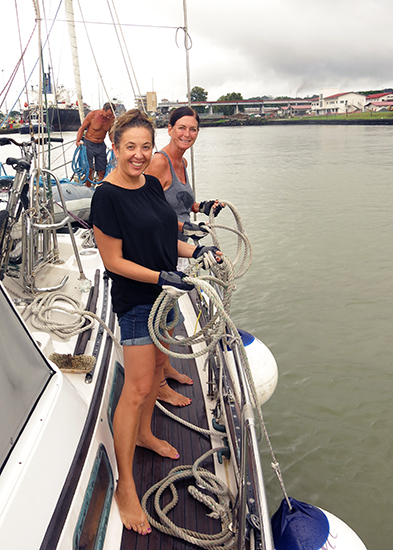
The bright lights of the pilot boat woke us up at 4:40am and we groggily introduced ourselves to our ACP advisor Armado who would be on board to guide us through the Canal. The sun rose as we passed under the Bridge of the Americas and through the Balboa docks. As we waited to enter the Miraflores locks we watched four tug boats nudging a massive container ship into the lower chamber of the new lock. Since the Panama Canal was built in 1914 the dimensions of the lock chambers defined the maximum size for ocean-going cargo ships, a classification known as Panamax. In 2016 a third lane of locks was opened, the chambers of the new locks are three times larger spawning a whole new fleet of super-sized vessels known as Neo-Panamax.
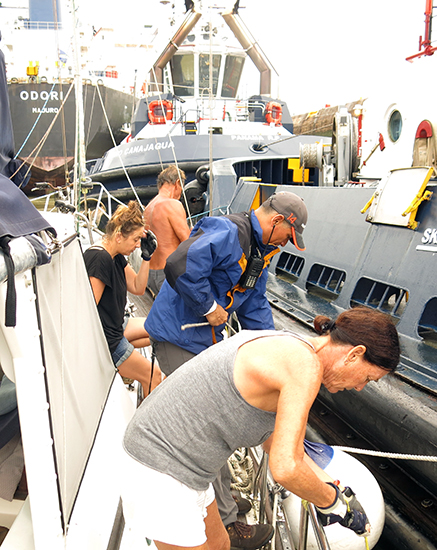
The cargo ship Odori entered the Miraflores Locks ahead of us, it was a tight fit – the sides of the vessel seemed to be almost scraping along the walls of the lock. Then two tugboats went in and finally Neil steered Distant Drummer in to the back of the chamber. We tied up to the port side of the last tug and looked around at the dank green walls towering over us. The surface swirled and eddied as the chamber filled with water and ten minutes later we were peering over the top of the wall. We repeated the process for the second chamber, the Miraflores locks lift vessels up 54ft in two steps. Then we followed the Odori up to the Pedro Miguel lock, the third of the locks on the Pacific side of the Canal.
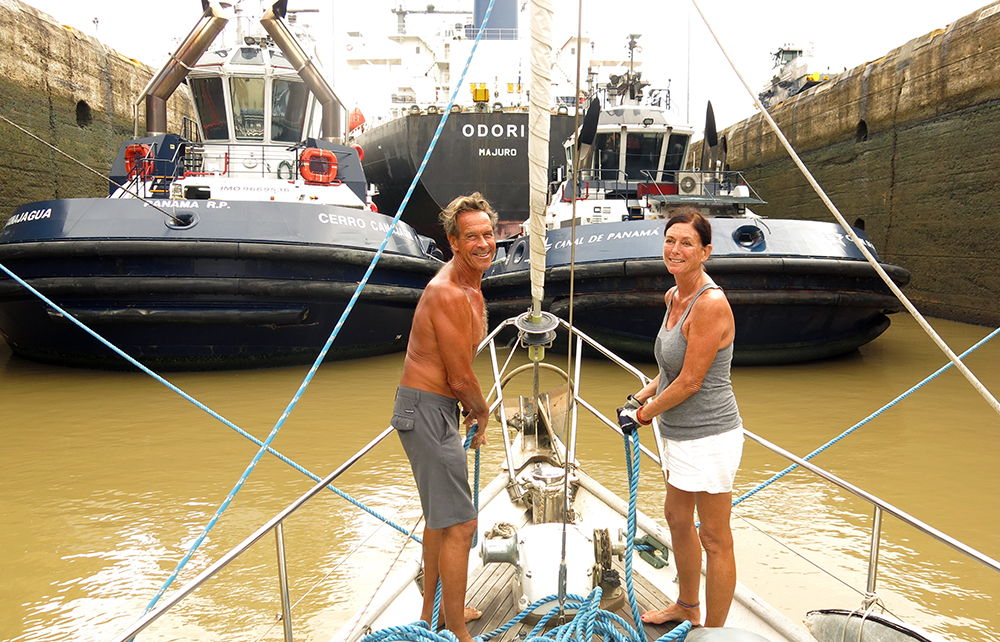
This time we had a centre tie and the line handlers had to use the forward and aft lines to hold DD in position in the middle of the lock. Once we were inside the chamber the dock hands onshore threw messenger lines to us with monkey fist knots at the end, we had to be careful they didn’t hit us on the head! We attached the messenger linse to the mooring lines then the dock hand pulled them in and secured them around the bollards. As the water rose we kept the lines taught as Distant Drummer ascended. By 10:30 we were through the locks leaving Panama City and the Pacific Ocean in our wake.
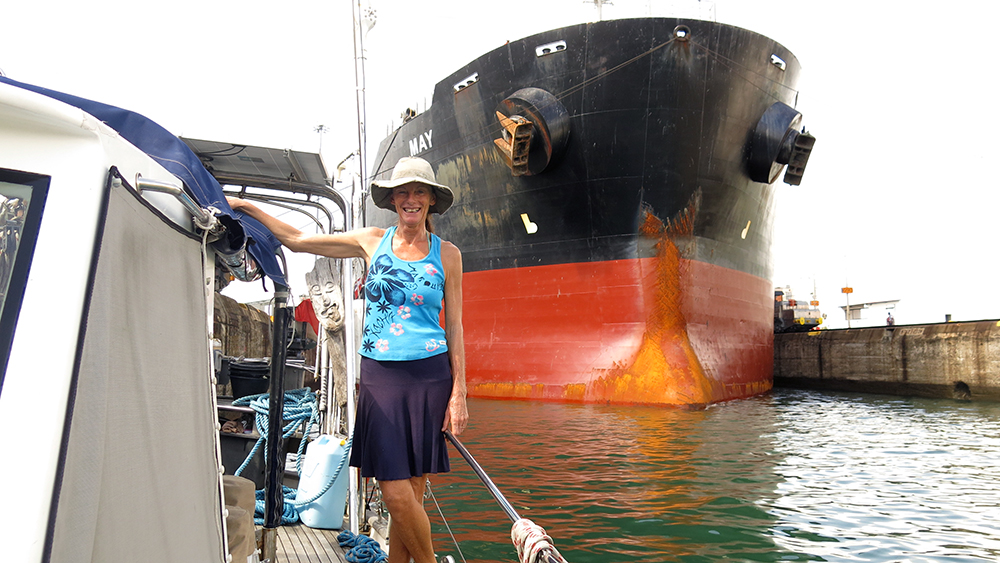
The next stage of the Canal is known as the Culebra Cut where the Panama Canal crosses the continental divide. It runs 7.4 NM from the Pedro Miguel lock to a bend in the Chagres River where it joins Gatun Lake. Ninety million cubic metres of rock were excavated to make the Cut and thousands of men died during its construction. With Armado guiding, Neil steered a course close to the right hand side of the channel almost touching the green buoys as we went by. Even so it still felt like a tight squeeze when enormous container ships or LNG tankers went by.
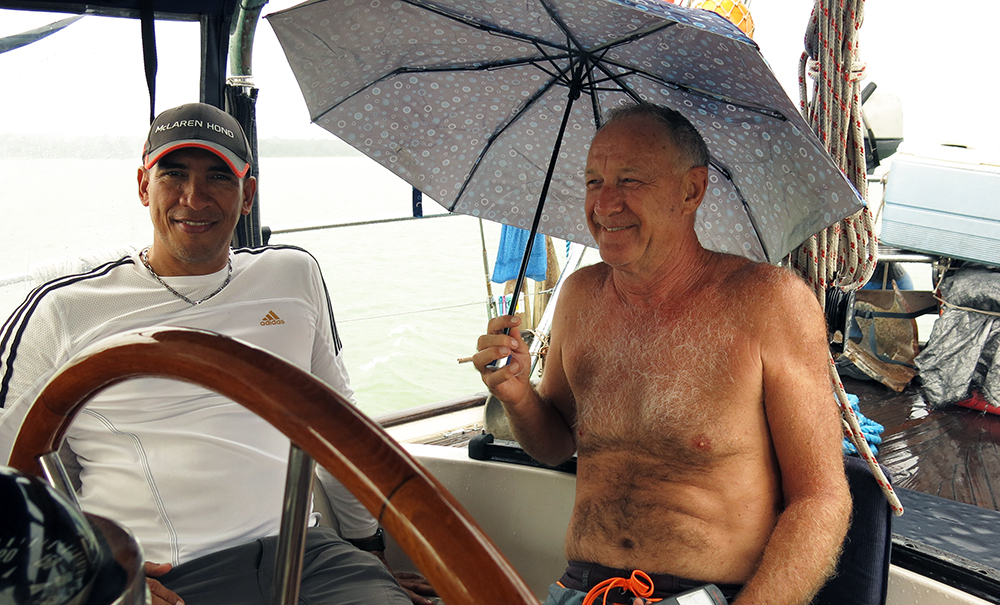
We passed the small town of Gamboa in the rain and navigated the twists and turns of the Gatun Lake in the drizzle. The lake follows the watercourse of the Chagres River which was flooded when the Canal was built, and dams at either end control the water level in lake. When we reached the Gatun Locks there was no north bound traffic waiting so we had to spend a night on the lake. We tied up to a large red buoy and Armado disembarked onto a pilot vessel, assuring us that another advisor would join us the following morning. It was a very peaceful and quite unique place to stay, as we enjoyed sundowners in the cockpit we listened to the growls of the howler monkeys and the whistles of the toucans in the jungle nearby.
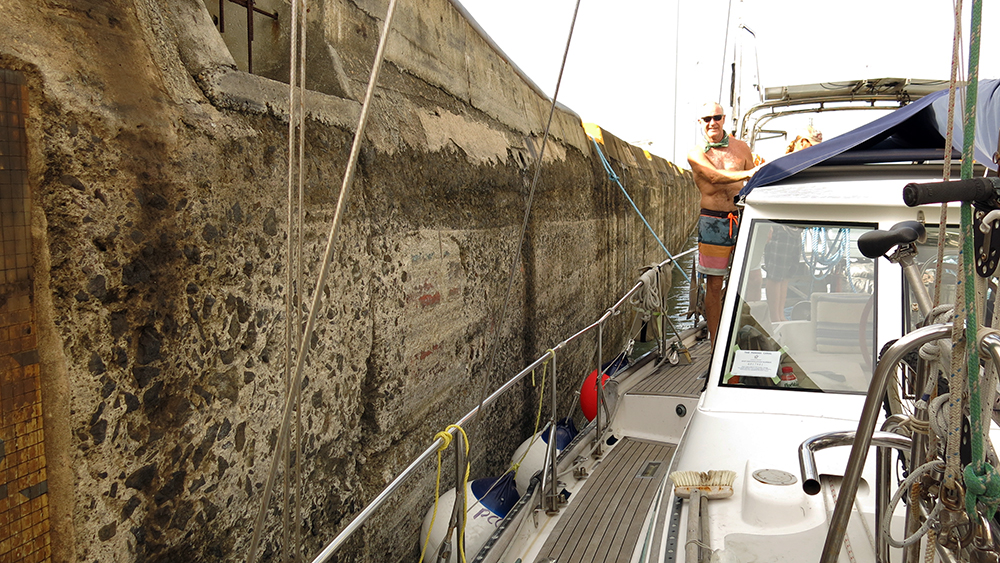
The next morning Moses our new advisor arrived and we entered the Gatun Locks ahead of May, another huge cargo ship. This time we had a side tie to the wall of the lock. Eric and Bryan threw mooring lines ashore as Neil steered us to the side of the chamber and the dock hands pulled us in snugly against the wall. As we descended our gallant line handlers eased the lines and down we went. We repeated the process through the three chambers and each time the gates opened we enjoyed the fantastic view of the Atlantic Bridge, Cristobal Harbor and the Caribbean Sea beyond.
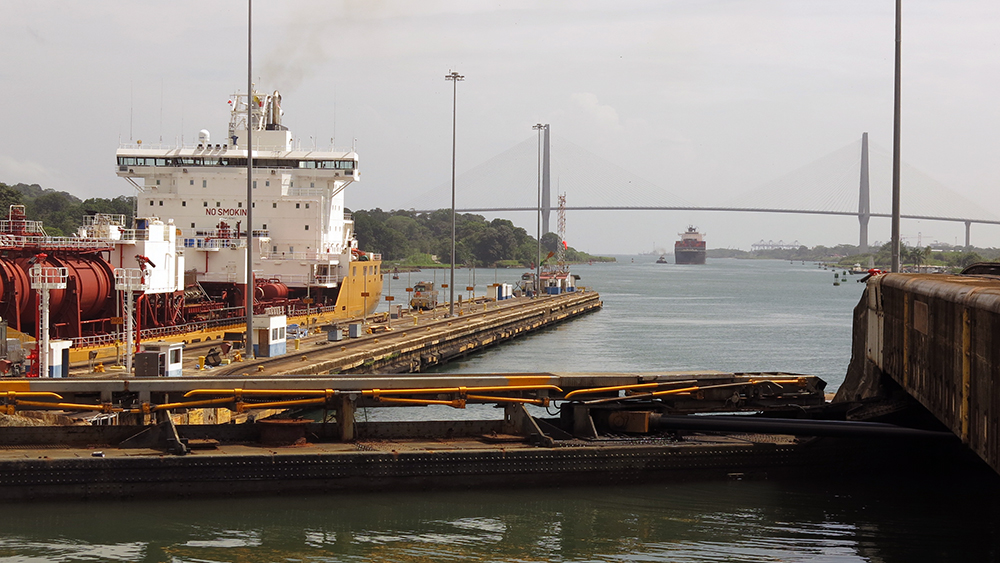
Once out of the locks we navigated across the flats of Cristobal Harbor into Shelter Bay marina and in no time we were tied up, popping a champagne cork and were celebrating our arrival in the Caribbean. A big thanks to our wonderful line handlers who’s skill and humour made the transit stress free and great fun.
More soon
Suzy
